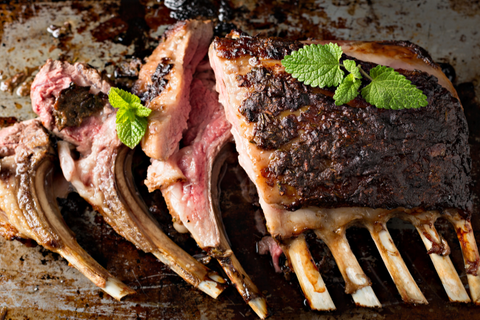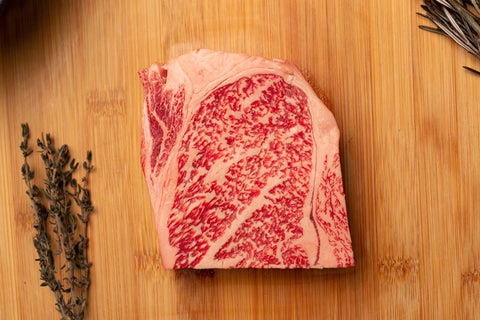RC Show shares food & beverage trends, industry challenges and the solutions shaping our dining experiences going forward
Even though we’d like to position the pandemic in our rearview mirror, several industries, including restaurants and foodservice are continuing to feel the long-term effects left behind from the last two years. Restaurants Canada is ready to address these issues at this year’s RC Show, Canada’s leading hospitality and foodservice expo, and offer solutions to tackle these challenges head on.
From April 10-12, RC Show 2023, with its theme HEART & HUSTLE, will highlight an industry that has been challenged, survived, revived itself, and is now looking ahead to the future. The action-packed, three-day event will provide plenty of new revenue opportunities, lead the conversation in foodservice innovation, provide a platform to meet, get hands-on and gain valuable insight, address current issues, and provide solutions to strengthen business operations and keep doors open to continue to thrive.
Here’s a taste of what trends and industry challenges you can expect to be addressed at this year’s RC Show, as well as some of the show’s featured exhibitors and speakers that are paving the way toward practical solutions:
Food & Beverage: This past year, food and beverage trends seemed to revolve around ingredient awareness, mocktails, convenient comfort staples and foods that focused on health and wellness. While some of these trends will continue into 2023, new innovations and ideas continue to pop up in the industry based on consumers’ growing demands. Here are a few of those changes that you can expect to see going forward:
Food Trends
Condensed/Focused Menus
Sometimes menus can feel more like a novel than a menu. With so many options, it’s hard for customers to choose. Restaurant owners are also becoming more aware of rising food costs and the amount of food waste they produce, which has made them rethink the multitude of offerings on their plates and are now beginning to trim down their food and beverage offerings accordingly. Condensing menus help restaurants speed up and simplify their delivery and take-out processes and lessen pressure in the kitchen when there is a shortage of cooks to hire. Brands such as The Fifteen Group make menu development and refinement easy to help restaurants maintain a clear focus and play up on their strengths.
Multi Sensation
Gastronomy for the senses is back! As diners slowly return to in-person dining they are looking for an out-of-the-box, non-traditional experience when they go out to eat or drink; they are seeking a fully immersive, multi-sensorial outing. Restaurants are starting to shift to experiences that transcend taste and engage in other senses, adding elements of storytelling to the dining experience to drive patrons. Companies like Rowe Beef, provide a unique steak-eating experience, and YessXpress on Wheels, a health conscious food truck, both provide one-of-a-kind dining experiences.. Whether it’s dining in the dark or musical-food pairing, restaurateurs are having to find innovative ways to engage their diners and provide unique and memorable experiences.
Flavours to look out for
Flavour palettes and profiles are evolving and constantly changing and 2023 is no exception. Swicy food – a collision between sweet and spicy elements is taking over menus, as well as the introduction of adding flavour to the heat we consume. Sachili, one of the many brands bringing this trend forth, provides a twist on the expected flavour of chili – where flavour beats heat.
Ube is also painting the town purple! A purple yam from the Philippines, this exciting new ingredient will be sure to pop up on dessert menus near you, as it is being added to everything from ice cream to doughnuts and everything in between.
Drink Trends
Non-Alcoholic Drinks + Mocktails
Continuing to gain momentum, non-alcoholic beverages and mocktails are here to stay in 2023. Consumers want to socialize, but socializing often comes with the expectation of drinking alcohol. Brands like Some Good Clean Fun, Grüvi and Barbet are taking the stigma away from sober-curious patrons by curating delicious non-alcoholic drinks and mocktails. This continues to be a trend into the new year, as Health Canada’s newest revision on alcohol consumption encourages consumers to limit the amount of alcohol they drink. Another beverage trend making a comeback is the throwback cocktail. Classic spirits and diner-favourites such as Palomas and Martinis are coming back strong as consumers look to reconnect with flavours from the past, with brands like Ford’s Gin and Beam Suntory helping consumers enjoy the nostalgia with a twist on their favourite cocktails.
Sustainable Breweries
Consumers are looking for brands and restaurants that are environmentally-conscious and breweries are no exception. Breweries are a significant part of the bar and beverage industry but also produce a significant carbon footprint through its operations and waste. Organizations such as Aevi Solutions are making it easier for companies to operate sustainably, while other breweries such as Avling are already incorporating sustainable practices such as sourcing ethically and responsibly farmed ingredients.
Design & Technology: Technology in the hospitality industry made huge strides during the pandemic as restaurants had to adapt to meet consumer’s needs and government restrictions. Technology will continue to remain relevant as it plays a huge role on how we dine, as well as supports challenges such as new and/or inexperienced staff looking to create a seamless user-experience.
Power of Technology – Simplifying Sales and Backends
Customers have come to expect a high standard from restaurants and would like to see technology play a bigger role in creating a more convenient and elevated overall experience. Surveys have shown that restaurateurs agree that investing in labour-saving tech would help mitigate the problem of staffing issues, but there remains some issues as to why some restaurants are not adopting technology including: the cost of implementation, customer acceptance and relatability of the equipment. There are several tools in the market that help provide all-in-one, customizable solutions designed to empower restaurants to adapt and thrive in any market, as well as streamline day-to-day activities, keep track of inventory and more. These include: Snappy, Toast and TouchBistro. Plenty of organizations are also ensuring your customers and your business’ information remains safe. Brands like Interac and Chase are focused on security initiatives to fight fraud and cyber security, ensuring your customers you can provide reliable and safe service.
Food Automation
We live in an age where robots can deliver food directly to your table. Companies such as Keenon Robots and SPARC Technology provide robotic solutions to restaurants that can complete a range of activities from welcoming guests to delivery to sanitization. High tech can also help out behind-the-scenes, as with Unox, who creates self-cleaning, speed ovens.
New Revenue Streams: The pandemic forced the industry to look at alternative ways to generate revenue and meet consumer demands. From this restaurants adapted and created new opportunities to reach diners at home, while taking into consideration their bottom line, as inflation significantly impacted everything from food prices to supply chain challenges, and more.
At-Home Meal Offerings
Although foodservice sales (as reported by Statistics Canada) rallied in 2022, climbing back to pre-pandemic levels in March, consumers have not returned to their former frequency of ordering at restaurants. This has forced restaurants to look for new revenue streams to make up for slower in-person numbers. A solution included meal kits and bringing curated and exclusive products directly to retail. You can see this come to life in this year’s Pop Up Experience. The creative vision of Chef Matt Dean Petit, the Trinity Market Pop Up Experience, one feature of RC Show’s larger Pop Up Experience, is a snack bar concept that also includes a bottle shop, retail space for local products, and more. It is a preview of Trinity Market, set to open at Queen West and Bellwoods in February.
Another alternative revenue stream came from brands like Too Good to Go, who provide restaurants with marketing opportunities as well as revenue generation by giving them the opportunity to sell their leftover food.
This year’s RC Show will also feature a Growth Series, with support from Farm Credit Canada, that will focus on helping operators and food and beverage brands fund new revenue generating opportunities. The Ontario Ministry of Agriculture, Food and Rural Affairs (OMAFRA) will be a participant of this series, who will provide educational and industry resources. OMAFRA will be driving economic growth and support local sourcing by participating in this series with a “Get Retail Ready” education session and meetings program.
Subscription Services
In addition to providing additional revenue streams, top chefs were able to leverage subscription services to continue to connect with customers and encourage new business. This offering will not be going away anytime soon. Sobeys, Longo’s and Farm Boy are just a few of the stores that will begin carrying products from foodservice operators and brands to the masses. The RC Show will feature speakers, who will address the growing need of subscription services and bring the restaurant experience to people’s homes.
Circular Economy: Environmentally-conscious consumers will continue to seek out brands that are local and actively minimize their own carbon footprint in 2023, this includes minimizing excess food waste.
Naturality
The term naturality will be one heard a lot in 2023. It focuses on regional ingredients, and supporting localized communities. According to the Globe and Mail, 80% of Canadians have made it a personal goal to be more sustainable when buying food, as well as the packaging their products come in. Brands such as EcoFocal and Cube Packaging are focused on eliminating plastic and providing reusable packaging to minimize waste.
Air Quality & Water Shortages
We’ve become more aware about air quality, especially in work settings. WoolGuard allows commercial kitchens to manage exhaust grease with their all-natural wool filters, saving restaurants money, as well their ability to maintain cleaner air in kitchens.
Food companies are one of the largest users of the world’s water, which seems to be facing an ongoing shortage, as the world is increasingly affected by climate change and a growing number of droughts. Companies like Diversey and Ecolab are working to provide solutions in water and hygiene to protect consumers and the planet. Single-use plastic waste continues to be a significant issue across the industry. Brands are moving forward with innovative new products that are offered as alternatives, such as Pura Vida, which is leading the charge in bioplastics, creating products such as straws, that are eco-friendly and compostable. SOFi Products has recently introduced lidless cups that save both space and cost. You can hear more about this topic at the RC Show, continuing the conversation of plastic reduction with representatives from LEAF Canada who will be sharing best practices when it comes to reducing plastic and implementing change in the industry.
Labour & Staffing: Restaurants and bars have some of the highest rates of mental illness and substance abuse. The pandemic has forced the industry to finally prioritize workers’ mental health, as well as address other issues head on such as staffing shortages to be able to take a closer look at how it can improve/support both.
Mental Health
Burnout and stress in the foodservice and hospitality industry became even more evident during the pandemic, as well as continuous closures, all of which led employees to look for work in industries that provided a more stable income and the necessary wellness support. The Burnt Chef Project was created with the intention of eradicating mental health stigma within the hospitality sector. Appearing at the RC Show, they will be addressing mental health within the industry and solutions restaurants can use to address issues.
Addressing Diversity in the Industry
In addition to searching for brands who work towards limiting their carbon footprint and being more environmentally-conscious, consumers are also eager to support organizations that support underprivileged communities and work on improving diversity in the industry. Brands such as Foodpreneur Lab are tackling systemic barriers and leveling the playing field for underserved communities to help restaurants adopt new solutions and create easier access to those who have historically been underrepresented in the industry.
Inflation Tool Kit
The recession is hitting the foodservice and hospitality industry hard. In addition to issues mentioned above, such as supply chain and labour shortages, elevated inflation, long-term debts caused by the pandemic, and consumers limiting their spend at restaurants are all changing how we dine out. RC Show will be introducing an inflation tool kit to address this. Sysco and its consultant team has created the Inflation Life Raft, a collection of tools and resources to help restaurants navigate the uncertainty of the upcoming recession. The toolkit outlines key areas to manage during inflation periods, as well as some inflation busters to help businesses remain profitable. Sysco will also be creating inflation-fighting dishes at this year’s RC Show.
Business & Marketing: 2023 is the year the industry looks for creative new ways to reinvent itself. From decluttering menus and simplifying the experience for fatigued diners to talent branching out and looking for exciting new ways to make a name for oneself, there are several ways talented industry professionals will gain a following this year.
TikTok Tastemakers
TikTok has taken over! Restaurants are using this platform to drive excitement and clout as much as influencers themselves beyond sharing recipes and reviews. Tastemakers on Tiktok are shaping trends that move into the real world, such as illusion cakes, butter boards or cloud bread. Tiktokers such as Dre Pao, who will be speaking at RC Show 2023, have used their presence online to drive excitement back to the industry and brands want to know how to take advantage.
Side Hustles
Because the industry had to adapt, restaurant owners and chefs sought out new ways to excite diners, taking up profitable side hustles to make ends meet and stand out. For example, private dining clubs continue to pop-up across the country as diners search for ways to socialize safely. Using private dining clubs or back rooms provide safe and hygienic spaces for dining experiences and social gatherings, not to mention provide something new and noteworthy for patrons looking for something totally unique.
Entrepreneurs adapted their skills during the pandemic and found a unique space for themselves in the industry and on social media including Imrun Texeira. With 15+ years of experience, Chef Imrun Texeira has worked in some of the world’s best and most influential restaurants. In late 2022, Texeira launched Wanderlust, a luxury personal chef service that offers a blind tasting menu and highlights local Canadian ingredients. Wallace Wong, also known as Six Pack Chef, changed the game by leveraging content creation and social media marketing to grow his audiences on Instagram and Tiktok, where he shares his food experiences with the world.
You can see these trends, challenges and find even more solution-based content at the RC Show 2023, taking place April 10-12, a place for the industry to come together to show off their HEART & HUSTLE like never before. For more information on the show, visit www.rcshow.com.
Original article by Restaurants Canada.
https://www.restaurantscanada.org/industry-news/industry-challenges-shaping-canadas-restaurant-and-foodservice-industry-in-2023/





